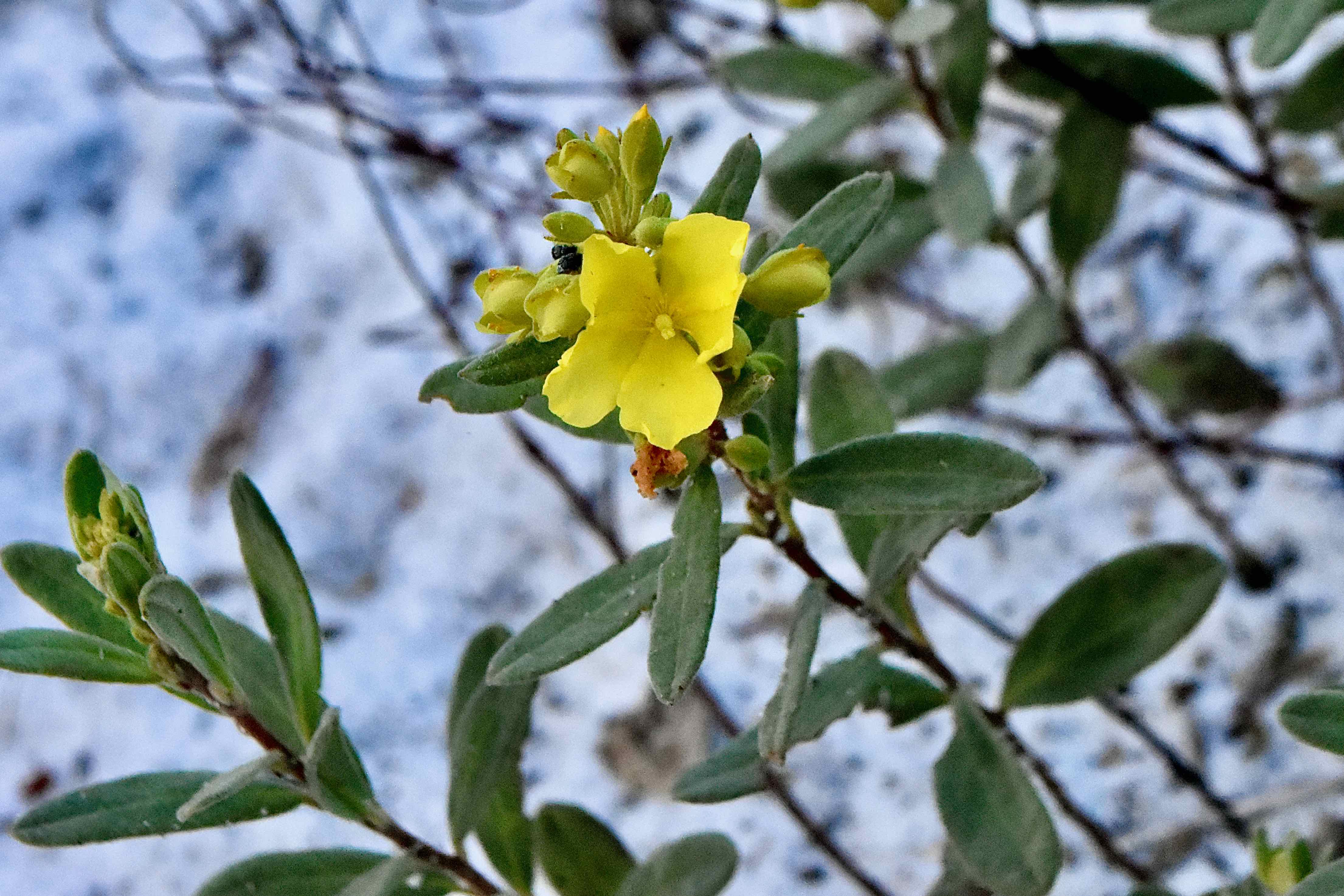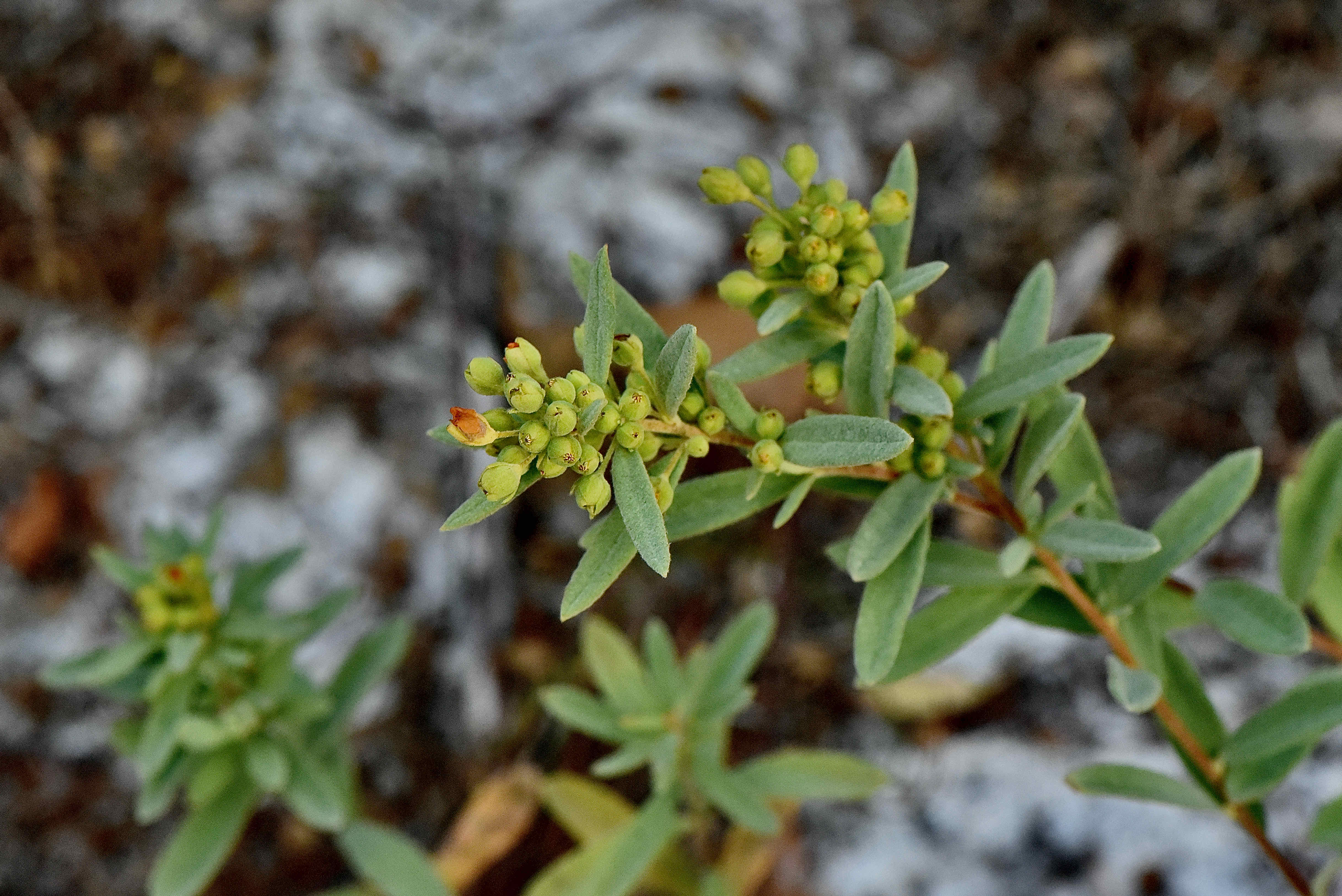
Pinebarren frostweed, photographed at Yamato Scrub Natural Area, Boca Raton, Palm Beach County, in February 2020.
Ok boys and girls! Can you say cleistogamous? How about chasmogamous? You can't? Neither can we!
We’re being a bit silly here, but cleistogamous and chasmogamous aren't exactly everyday words. However, they are important to know when discussing pinebarren frostweed, known to the scientific world as Crocanthemum corymbosom. They describe how the flowers work and how the species reproduces. The second word in the binomial name is important too, since it describes how those flowers are arranged, a key in separating our guy from a look-alike cousin.
But before we get into that, a few basics. pinebarren frostweed is a Florida native found almost all of the state’s 67 counties, with the notable South Florida exception of Monroe, both the Keys and the mainland. It’s also found along the Atlantic Coastal Plain from North Carolina to Mississippi.
It’s found in sandy habitats, mostly sandhills, scrub and scrubby flatwoods here in Florida. It is a perennial.
The Institute for Regional Conservation, based in Delray Beach, considers pinebarren frostweed rare in South Florida. NatureServe, the conservationist website, rates it a G4, meaning they consider it apparently secure from the threat of extinction.
Pinebarren frostweed’s look-alike cousin is Florida scrub frostweed, C nashii, which has a limited habitat preference and a much more limited range, making it vulnerable to extinction.
Pinebarren frostweed is short, reaching maybe a foot off the ground and a foot or two wide. Leaves and stems are covered with dense hairs, giving the plant a gray-green look — and the inspiration for the frostweed name. If you’ve ever seen a frost-covered lawn, you know what we mean. Stems can be woody, especially near the base. Leaves are long narrow; they be slightly oval-shaped or more linear. The edges of the leaves can be curved down and in, revolute in botanical terms.
The flowers are a bright yellow and borne atop an inflorescence, or flower stem, in a corymb. Each flower lasts only a day.
So what’s a corymb? Think of a menorrah. Note how all the individual candles are on the same plane, but the individual stems become progressively longer the farther out from the center they are. That’s a corymb, and that’s how the flowers and buds are arranged on pinebarren frostweed.
By contrast, on Florida scrub frostweed, the flowers and buds are borne on numerous short stems called thyrses along the inflorescence.
Now let’s get back to cleistogamous, pronounced klahy-stog-uh-muhs as per dictionary.com, and chasmogamous, pronounced kaz-mog-uh-muhs, also per dictionary.com.
Flowering plants pollinate in two ways, either by outside forces — by wind transporting pollen from one flower to another or by birds and bugs — bees, butterflies, beetles, ants, etc. — doing the heavy lifting — or by themselves without any outside assistance.
When it’s done by outside forces, it’s called chasmogamous pollination; when its done internally, it’s called cleistogamous pollination.
If the yellow blooms don’t attract pollinators — chasmogamous pollination — and don’t produce seeds, a second round of flowers that look like unopened buds rather than fully developed blooms will produce seeds. Chasmogamous pollination provides genetic diversity but is hit or miss and requires a substantial output of energy to produce those pretty flowers; cleistogamous pollination is more of a sure thing and requires little effort on the part of the plant but the offspring are clones of the parent. No genetic diversity, which could affect the species’ long-term success.
Pinebarren frostweed is not cultivated, and has no other human uses that we’re aware of.
Pinebarren frostweed is also known as pinebarren rock-rose and cluster rock-rose. Pinebarren is also spelled pine barren. And like it’s cousin, many sources use Helianthemum corymbosom as the scientific name. It is a member of Cistaceae, the rock-rose family.



